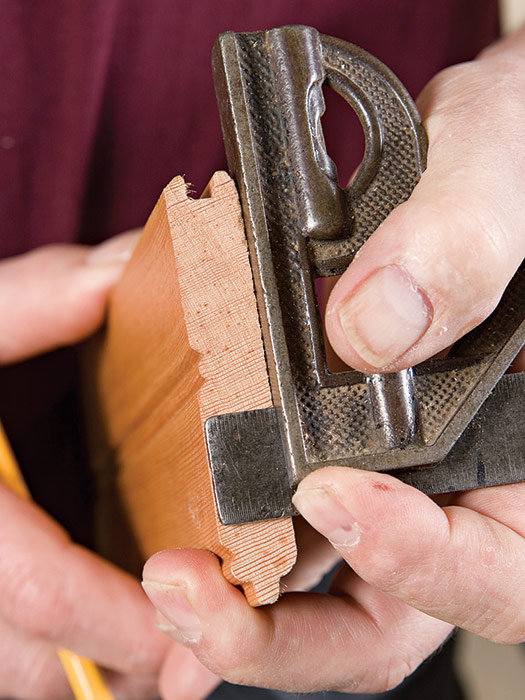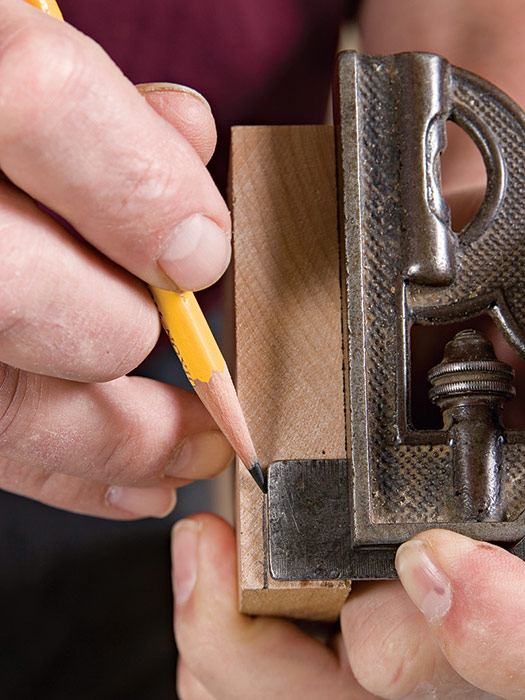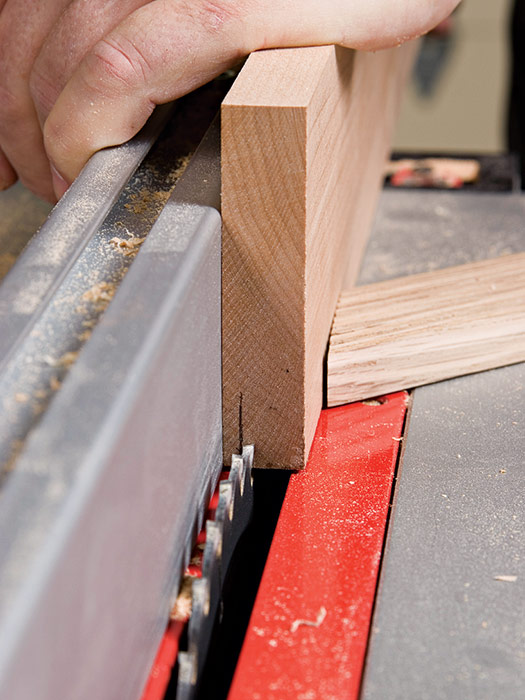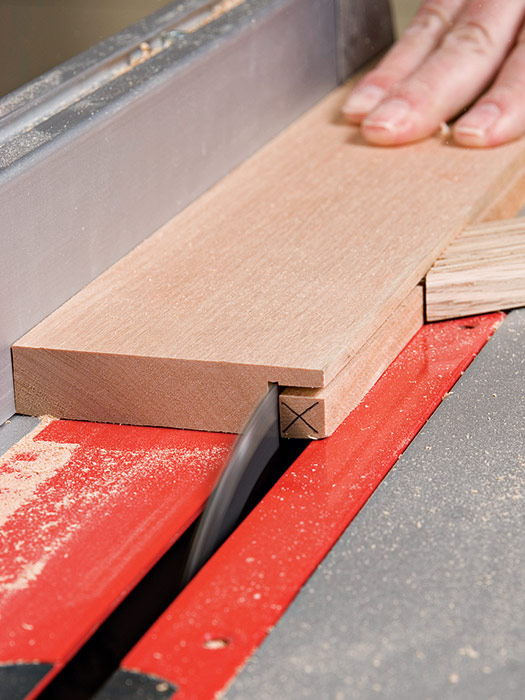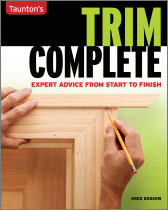Rabbeted Baseboards and Top Rails for Beadboard Wainscot
Cut rabbets in the baseboard and top rail to hide the end cuts of the wainscot boards.
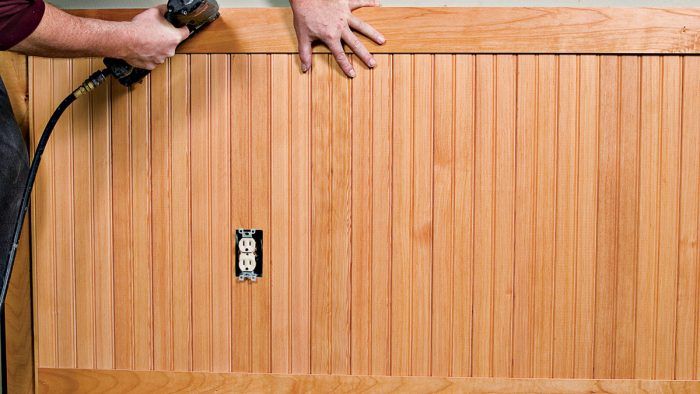
You could take the time to carefully cut each piece of tongue-and-groove beadboard wainscot paneling to fit tight between the base trim and top rails, but a cleaner and faster way to do the job is to conceal the ends of the boards behind rabbets in the trim. This not only creates a cleaner line at the joint, but also makes the job go faster because you don’t have to be as precise with your cuts of the paneling pieces. This type of joint also leaves room for wood expansion in the top and bottom rails.
To lay out one the rabbets, set an adjustable square to the thickness of the wainscot board and transfer this dimension to the end of a piece of baseboard or top-rail stock 1, 2. Set the tablesaw fence so the saw blade lines up on the waste side of the mark on the end of the board and set the blade depth arbitrarily from 1 /4 in. to 1 ⁄ 2 in. for the first cut 3. This depth determines how far the boards will fit into the rabbet. Make the cut then reset the fence so the blade lines up with the end of the previous cut. Adjust the depth of the cut to remove the waste 4. Use a featherboard to keep the stock tight to the fence.
Excerpted from Trim Complete: Expert advice from start to finish by Greg Kossow
Available at Amazon.com.

